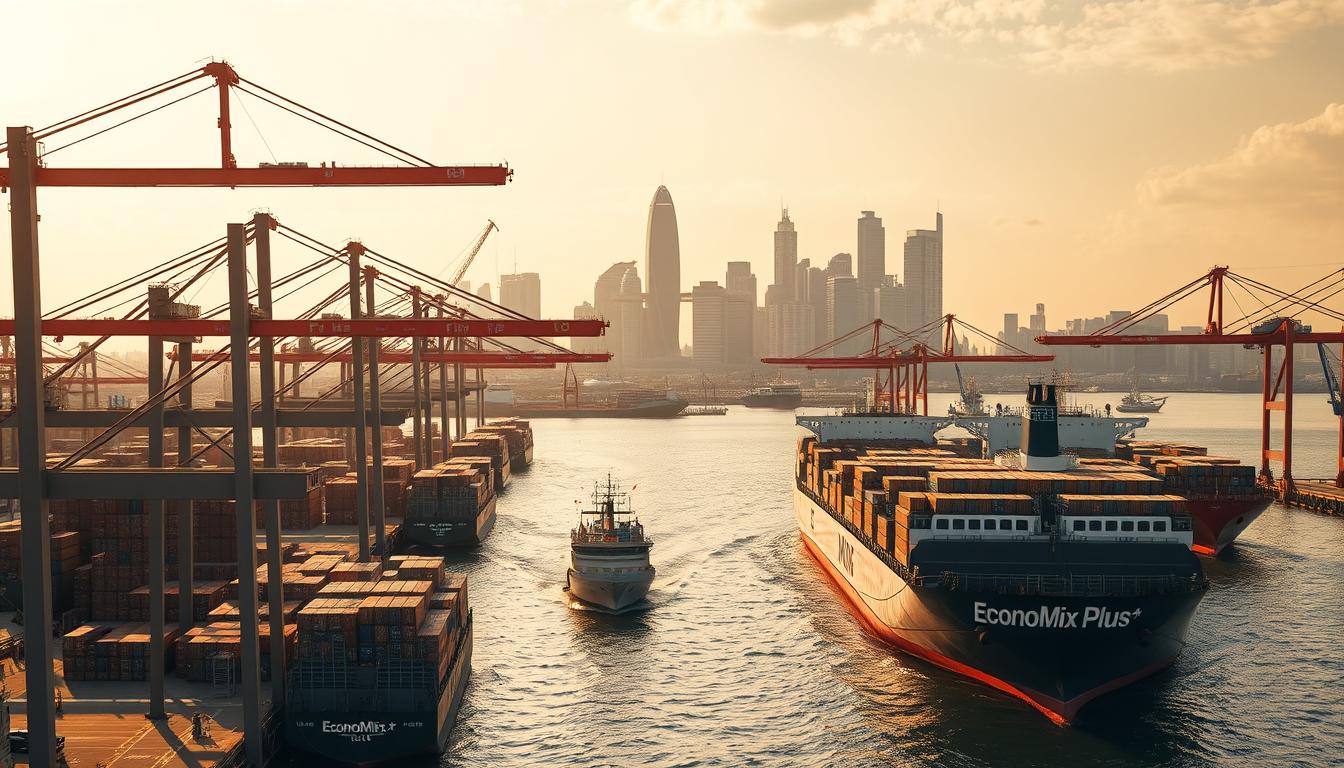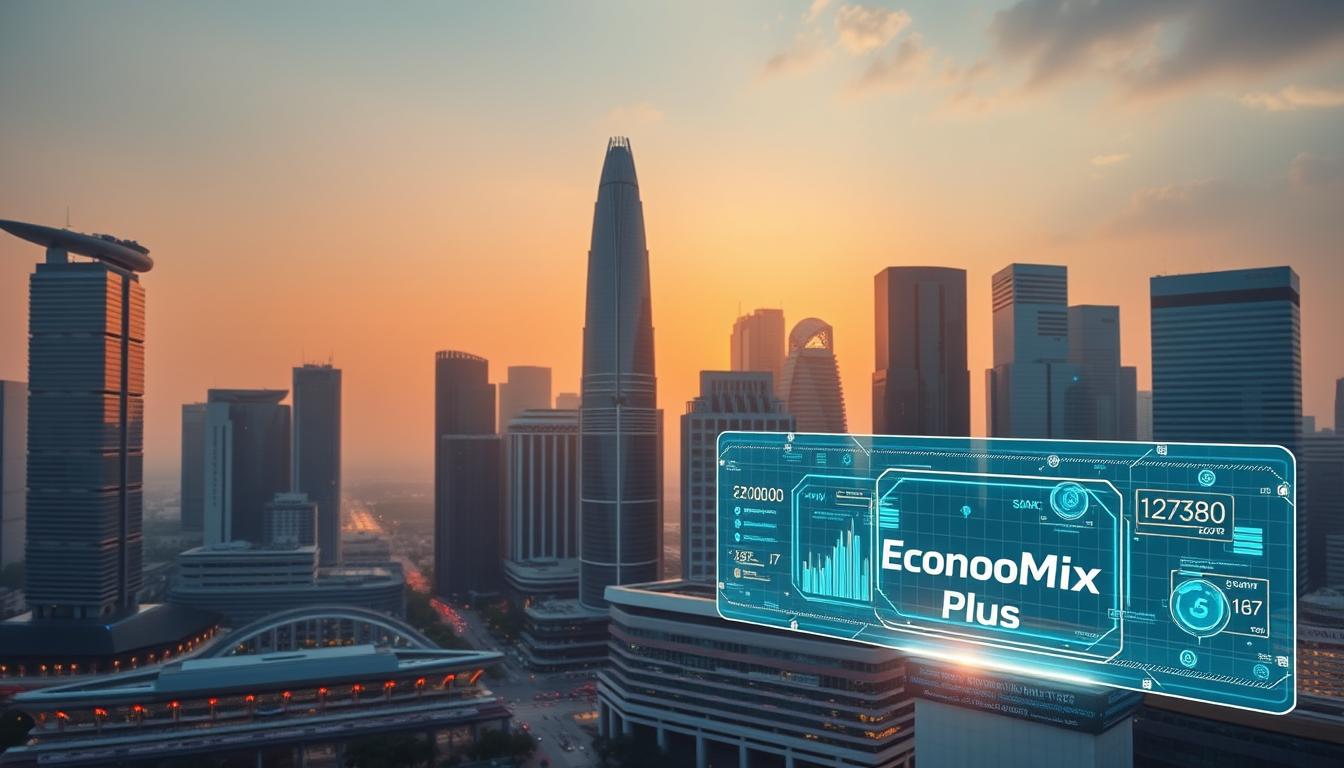Can a nation with no natural resources become one of the world’s wealthiest economies? This question defines the improbable journey of a former British trading post that evolved into a global financial powerhouse. Through visionary leadership and meticulous planning, this city-state defied expectations.
When independence was gained in 1965, the nation faced high unemployment and political instability. Under Lee Kuan Yew’s leadership, the government prioritized strategic infrastructure investments and pro-business reforms. Its prime geographic position as a maritime crossroads became the bedrock of its economic growth.
By 2023, GDP per capita surged from $500 to over $88,000. Over 4,000 multinational corporations established regional headquarters there. The secret? A world-class system combining strict anti-corruption measures, competitive tax rates, and cutting-edge logistics networks.
Early policies focused on education, workforce development, and attracting foreign expertise. These decisions created institutions that weathered multiple crises while maintaining global competitiveness. The results speak louder than theories: a blueprint for turning scarcity into strength.
Key Takeaways
- Strategic coastal location enabled trade dominance
- Government policies prioritized long-term stability over short-term gains
- GDP per capita grew 176-fold within six decades
- Multinational corporations drive 54% of private-sector employment
- Anti-corruption frameworks built investor confidence
- Education reforms created a highly skilled workforce
Historical Foundations and Colonial Legacy
British colonial rule laid the groundwork for modern trade networks in Southeast Asia. By 1819, the East India Company established a strategic port to connect China’s tea exports with India’s spice markets, effectively facilitating a crucial exchange of goods that would reshape the economic landscape of the region.
This move positioned the territory as a vital node in global maritime routes, allowing it to serve not only as a trading hub but also as a cultural melting pot where diverse influences converged.
The establishment of this port marked the beginning of a new era, where Southeast Asia would become increasingly integrated into the global economy, drawing in merchants and traders from various parts of the world.
Colonial Beginnings and Early Trade Routes
Foreign banks like HSBC and Chartered Bank arrived in the late 1800s, creating a foundation for financial services. Local institutions such as OCBC emerged to serve the growing population. Despite a lack of natural resources, the colony thrived through its harbor and administrative systems.
Lee Kuan Yew’s Vision in a Post-Colonial Era
After independence, Lee Kuan Yew reimagined the nation’s priorities. His government focused on export-led growth, building industrial estates, and modernizing legal frameworks. Anti-corruption measures and education reforms transformed a fragmented community into a cohesive workforce.
| Aspect | Colonial Era | Post-1965 Reforms |
|---|---|---|
| Economic Focus | Trade entrepôt | Manufacturing & exports |
| Banking System | Foreign-led operations | Local-global partnerships |
| Governance | Extractive policies | Meritocratic institutions |
Consolidating support across diverse groups proved critical. Investments in housing and healthcare addressed immediate needs while laying groundwork for long-term sector growth. By 1975, manufacturing accounted for 22% of GDP—a stark shift from colonial-era reliance on transit trade.
Key Strategies Driving Economic Growth
Three interconnected approaches fueled this nation’s meteoric rise. Each strategy addressed critical gaps while amplifying existing strengths through precise execution. The first approach involved a robust emphasis on export-led industrialization, which not only diversified the economy but also increased its resilience against global market fluctuations.
This strategy was complemented by substantial investments in infrastructure, ensuring that industries had the necessary support systems to thrive. Furthermore, the second approach focused on financial reforms that opened up the banking sector to international players, enhancing competition and innovation within the local market.
These reforms were crucial in creating a more dynamic financial landscape that could support the burgeoning industries. Lastly, liberalization policies played a vital role in attracting foreign investment, fostering an environment where both local and international businesses could collaborate effectively. Together, these strategies created a synergistic effect, driving sustained economic growth and transforming the nation into a formidable player on the global stage.
Export-Led Industrialization and Infrastructure Investment
The government channeled 30% of its budget into land reclamation projects during the 1970s. This expanded usable territory by 25%, creating space for industrial parks. Tax incentives for exporters and streamlined customs procedures boosted manufacturing output by 18% annually.
Financial Reforms and Liberalization Policies
Banking reforms in 1984 allowed foreign banks to conduct full services. Corporate taxes dropped to 17%—half the global average. These moves attracted 200+ financial institutions within a decade. A unified regulatory framework reduced compliance costs while maintaining rigorous oversight.
Attracting Foreign Investment and Multinational Corporations
Global tech firms received grants covering 50% of workforce training costs. Special economic zones offered 10-year tax holidays for R&D-focused businesses. By 1995, foreign direct investment reached $9 billion annually—triple 1980 levels.
Public-private partnerships became standard practice. State-owned enterprises co-developed ports with Maersk and IBM, blending local expertise with global best practices. This collaborative model turned scarcity into strategic advantage across key industries.
How Singapore Transformed from a Colony to a Global Financial Hub
Strategic reforms and geographic advantages became twin engines driving economic progress. The government launched targeted programs to upgrade infrastructure while optimizing its position along vital shipping lanes.

Architects of Modernization
Central to this shift was the Economic Development Board, established in 1961. It offered tax breaks for manufacturers and funded worker training programs. By 1980, these measures helped industrial growth outpace regional competitors by 12% annually.
Port as Economic Catalyst
The city-state enhanced its natural harbor with automated cranes and real-time cargo tracking systems. Today, its port handles 20% of global container transshipments. This efficiency cut shipping delays by 40% compared to regional rivals.
| Area | Pre-Reform (1960s) | Post-Reform (2020s) |
|---|---|---|
| Port Operations | Manual cargo handling | 98% automated processes |
| Housing Access | 23% home ownership | 89% home ownership |
| Business Regulations | 45-day startup process | 1.5-day registration |
Urban planning innovations addressed housing shortages while creating mixed-use business districts. Public transport networks connected industrial zones to residential areas, reducing commute times by 35%.
These coordinated efforts elevated the city-state into a global trade nexus. Maritime services now contribute 7% of GDP, demonstrating how location and policy can reshape a nation’s destiny.
Innovations and Global Competitiveness in Finance
Financial leadership requires constant reinvention. This truth drives the city-state’s approach to maintaining its position as Asia’s premier monetary nerve center. Regulatory foresight and technological agility now define its financial ecosystem.

Evolution of the Banking Sector and Regulatory Excellence
The Monetary Authority of Singapore (MAS) revolutionized oversight through real-time risk monitoring tools. After the 2008 financial crisis, it mandated stress-testing protocols that became global benchmarks. Five digital bank licenses issued in 2020 marked a strategic shift toward inclusive finance.
Local banks like DBS transformed into digital powerhouses. Their AI-driven platforms reduced loan approval times from weeks to minutes. “Regulation must enable innovation, not stifle it,” noted MAS Managing Director Ravi Menon in 2022.
Digital Transformation and Fintech Advancements
Blockchain solutions now process cross-border payments 80% faster than traditional systems. The PayNow network links 9 million users across banks and e-wallets. Fintech startups attracted $4 billion in funding during 2021-2023—triple 2018 levels.
Singapore’s regulatory sandbox allows testing of crypto custody services under controlled conditions. This approach balances market freedom with consumer protection. Partnerships with Swiss and UAE regulators create interoperable digital asset frameworks.
| Innovation | Singapore | Peer Countries |
|---|---|---|
| Digital Banks | 5 licensed (2023) | Hong Kong: 8 (2023) |
| Fintech Funding | $4B (2021-23) | Switzerland: $2.1B |
| Blockchain Adoption | 87% of banks | USA: 73% |
These advancements address historical challenges like limited natural resources through intellectual capital. By prioritizing sector-wide digitization, the nation sustains growth despite global economic uncertainties.
Conclusion
Nations rarely rewrite economic playbooks successfully, but one city-state’s journey defies convention. From colonial port to financial hub, its ascent reflects calculated choices over luck. Lee Kuan Yew’s administration fused strategic location with bold reforms—turning limited land into world-class infrastructure and a fragmented population into a skilled workforce.
Decisive policies drove results: GDP per capita surged 176-fold, while 4,000 multinational firms anchored operations. The system balanced pro-business tax rates with anti-corruption rigor, earning trust across global markets. Investments in housing and digital banking ensured broad-based growth, with 89% home ownership and AI-driven financial services.
Today, the nation’s role as Asia’s top financial center stems from synergy. Port efficiency, regulatory foresight, and tech adoption created a blueprint for resource-scarce countries. Its legacy proves that visionary leadership and adaptive institutions can transform geography into destiny—a case study in sustained success.
FAQ
▶
▶
▶
▶
▶
▶














